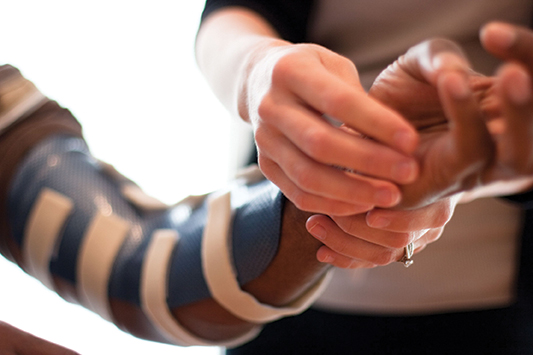Understanding Nerve Compression
Nerve Compression is a medical condition due to direct pressure on the nerves of the body, resulting in pain, numbness and weakness of muscles.

A person’s lifestyle lifestyle choices and environment have a direct impact on their health. Since many people these days they tend to forget to make time for their health, they suffer any number of medical conditions. One such condition is Nerve Compression.
What is Nerve Compression and what parts of the body does it affect the most?
Nerve Compression is also known as Compression Neuropathy, and it is a type of medical condition caused due to direct pressure to the nerves. In most cases it affects a patient’s neck and waist but it can affect any part of the body depending on the type of pressure on the nerves.
Some of its symptoms are chronic pain, tingling sensations, numbness, and burning sensations in the affected areas. Prolonged exposure to pressure in the affected regions can lead to muscle weakness and muscle atrophy.
What are its causes and can any other underlying diseases cause Nerve compression?
Nerve Compression can have any number of causes from something as simple as repeated incorrect posture of the body parts to physical trauma from accidents or falls. In some cases, the nerves can also be compressed due to tumor or diabetes, which can make the nerves susceptible to even the slightest amount of pressure resulting in nerve compression.
Many people tend to suffer from Nerve Compression in the neck and back. In these cases, it happens due to slight movement in the intervertebral disc of the spinal cord which puts the surrounding nerves under pressure. This is mostly due to incorrect sitting posture for a prolonged period.
What are the risks and likely ways to get affected?
One can experience Nerve Compression at any moment in his or her life. In most cases it is due to prolonged and repeated external force to the affected areas which tends to create discomfort in the affected areas. This can lead to numbness and muscle weakness in the areas which can eventually lead to constant pain, difficulty in movement of the limbs, muscle atrophy and even paralysis.
A significant number of cases stem from prolonged incorrect postures of the body parts such as neck, arms, hands and back.
How is Nerve compression diagnosed?
Diagnosis of Nerve Compression depends on which nerve is affected, where along its length it is affected, and how seriously it is affected. Usually, tingling sensations, reduced sensations, pain, and numbness are more than enough for its diagnosis. This is one of the methods applied by medical professionals in their clinical practice.
Alternatively, when the above mentioned procedures are ineffective in diagnosis, an MRI scan is done. This way an in depth analysis of the affected part is presented and the patient is diagnosed accordingly. This method is applied if the patient is unsure about whether they have Nerve Compression or not and also if they are not able to recall the causes that led to it.
Are there any prevention measures for it?
There are number of prevention measures for Nerve Compression, that can be easily picked up by people. Regular exercise, regular physical checkups, taking rest, taking breaks in between working sessions, taking care of physical posture are a few examples of the prevention measures. People need to be more proactive toward getting themselves checked if they have a higher than average physical discomfort.
Additionally, people need to more aware of the physical strain that puts on their body due to their work and social environment. By doing so they can shift more focus on their well-being and prevent not just Nerve Compression but a variety of other medical conditions.
What treatment options are available for people with this condition?
The treatment for Nerve Compression depends on the underlying causes. There are primarily two treatment options for patients diagnosed with Nerve Compression.
First is the therapeutically option which includes physical therapy, natural therapy and ayurvedic therapy. These methods are where the patient’s affected areas are put in focus and the condition is treated accordingly with physical treatments, diets, medication, ayurvedic medicine etc. Generally, any one of these is enough for treatment but a combination of them can benefit the patient and the treatment can be done quicker.
The second treatment option is surgery and it is reserved for extreme cases. Surgery is only reserved in particular cases and depends on the severity of the symptoms. Cases that could lead to paralysis, carpal tunnel syndrome, cubital tunnel syndrome are examples where prompt surgery is needed to be performed on the patient.


